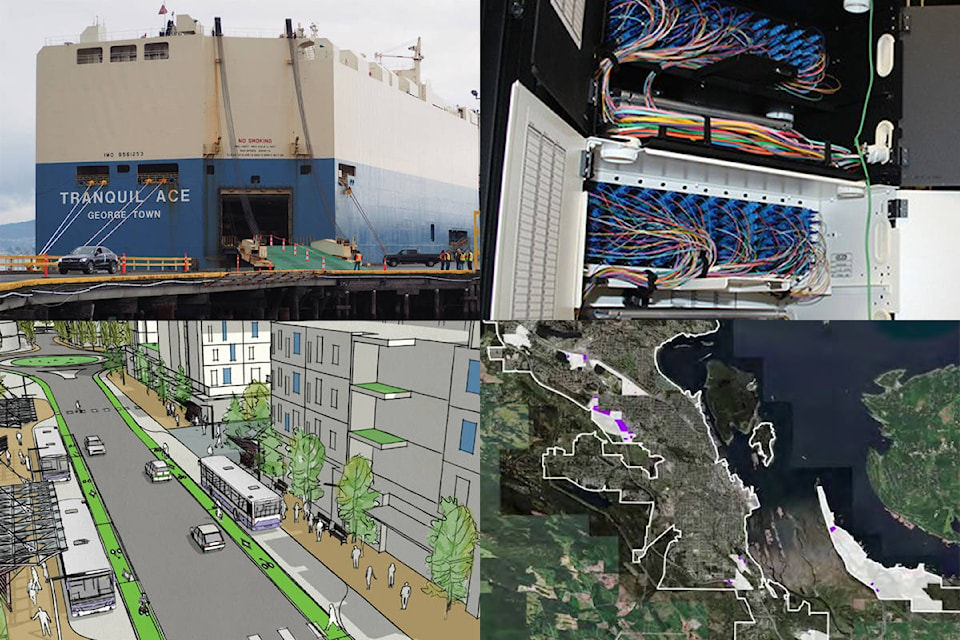The City of Nanaimo is ready to take on greater economic leadership locally with the creation of a new economic development strategy.
City council is expected to endorse an economic development strategy next month after reviewing a draft last month.
Since late 2019, an economic development task force has been working on the strategy as well as planning for the creation of an arm’s-length economic development agency, two recommendations made by a consultant.
Coun. Jim Turley, one of the members of the task force, said the strategy is about much more than marketing Nanaimo as a place to do business.
“While that may be part of it, we need to develop, first of all, something to market,” he said. “I think almost universally, everybody on the task force agreed that it should be project-driven as opposed to ‘let’s get XYZ business to set up in Nanaimo.’ Let’s set up the strategic infrastructure that we may need for some of these first.”
The economic development strategy focuses on six areas: infrastructure, business development, skills development and talent attraction and retention, innovation and technology, social and environmental responsibility, and marketing.
The first recommendation is creation of an infrastructure plan, with some specific projects identified.
Waterfront investment is recommended, including at 1 Port Drive, where the city should “continue to work on the phased development … by supporting re-zoning, subdivision and disposition of the property to create a signature waterfront development.”
A transportation, cargo and logistics hub is also high on the list of recommendations, as it was in a recent report from the mayor’s task force on recovery and resilience.
“Nanaimo could position itself as an extension of the Lower Mainland transportation network, providing economic benefits locally but also contributing to reduced traffic congestion and greenhouse emissions for the entire region,” the document notes, adding that some initiatives could include “increasing direct vessel calls from international carriers, short-sea shipping opportunities, passenger foot ferry and airport … development.”
Some specific projects include a distribution/logistics facility at Duke Point and expansion of the vehicle processing centre at the Assembly Wharf.
Protection and expansion of “employment lands” are mentioned as key.
“If Nanaimo is to become a distribution/logistics hub and take advantage of its trade zone status and deep harbour at Duke Point, the city should safeguard employment lands from conversion to other uses, while unlocking the potential of under-developed properties,” the document notes.
The strategy mentions that development of broadband connectivity will be vital and identifies partnership opportunities to support and link networks, including fibre-optic cables servicing the downtown, hospital and university districts in a “community fibre initiative.”
Bill Corsan, the city’s director of community development, said Nanaimo is a hub of the Connected Coast high-speed internet initiative and could have the best internet connections on the Island, making it more attractive for high-tech businesses.
Development of a downtown tech hub is a recommendation in the strategy, with an acknowledgement that Nanaimo needs to create conditions for growth there including not only infrastructure improvements, but downtown revitalization.
“The underdeveloped nature of [the] local tech sector is a concern both because tech is the fastest-growing sector of the global economy and because technology will be integral to the success of all economic sectors going forward,” the strategy notes.
The ec-dev strategy also acknowledges the health-care sector’s importance as a major employer and suggests advocacy for expansion of tertiary services at Nanaimo Regional General Hospital.
Corsan said some of the strategy’s infrastructure recommendations are among the most interesting.
“I think we have momentum on a lot of those files and it’s really about making sure that we keep [that] going,” he said.
The economic development strategy addresses Nanaimo’s labour market situation, noting poverty and education levels and impacts of COVID-19 mean targeted programs are needed for people who are unemployed and under-employed.
Another social factor touched on in the strategy is the need to continue to address problems caused by homelessness, mental health and addictions issues and social disorder.
“There are clear economic consequences for the city stemming from these issues, whether that is in relation to the labour market, the housing market or downtown and waterfront development,” the strategy notes. “An improvement in the socio-economic welfare of all residents, including the most vulnerable, will have positive implications for local quality of life measures and the city’s ability to grow and sustain its business and economic base.”
The City of Nanaimo will seek feedback on its draft economic development strategy, then bring it back to the council table for endorsement. After that, city staff will work with a consultant to develop a work plan. City council voted unanimously to extend the ec-dev task force’s mandate until the end of February.
“I think there’s some really good structural and foundational pieces in the report that are worthy of focus,” said Coun. Tyler Brown. “It is much more than branding and marketing, it’s about creating conditions where people and businesses can come and try to grow rather than be attracted here and find out there’s some key things missing.”
The city’s economic development department, currently consisting of one staff member, will double in size with the hiring of an economic development manager scheduled for the summer. The departmental budget is $250,000 for this year, while the arm’s-length agency will have a budget of $300,000 plus $269,000 carried over from last year.
READ ALSO: Nanaimo’s recovery task force recommends pride of place, strategic investment
READ ALSO: City of Nanaimo takes inventory of its land for official community plan review
editor@nanaimobulletin.com
Like us on Facebook and follow us on Twitter
